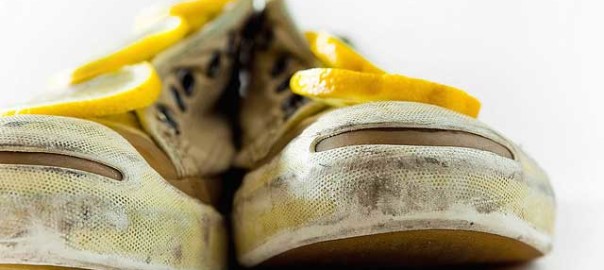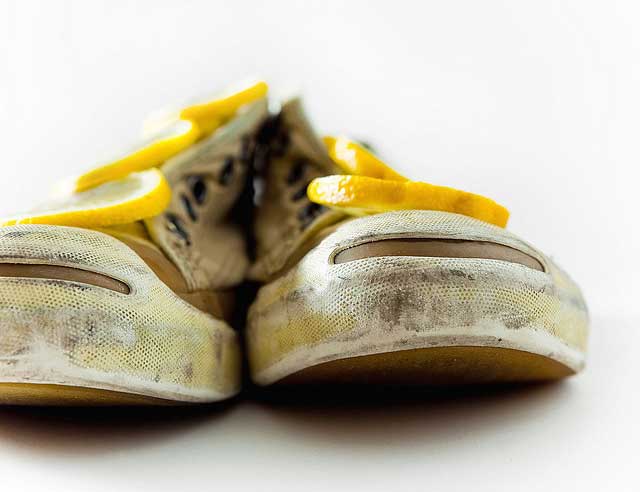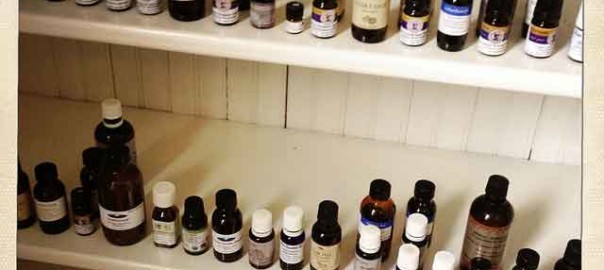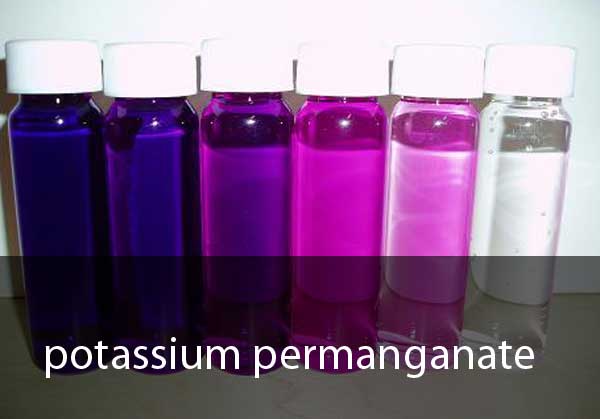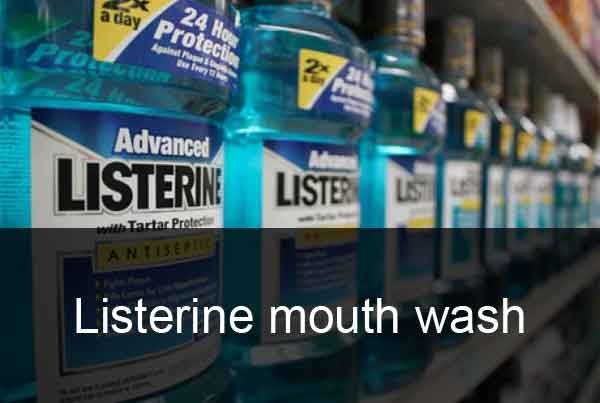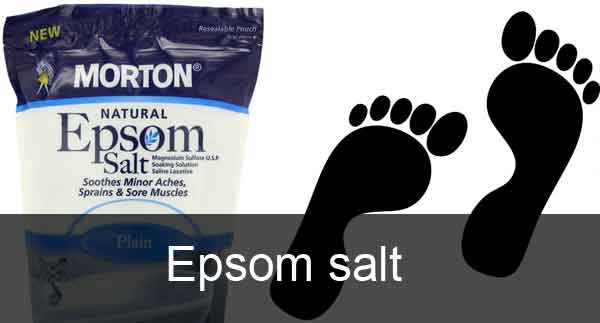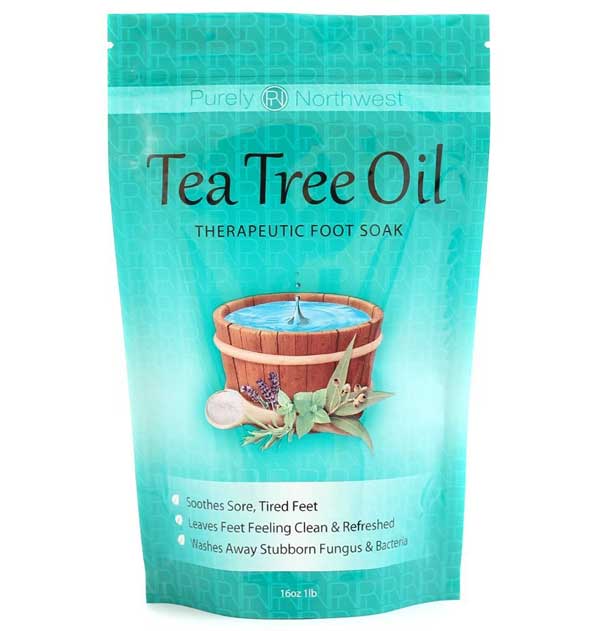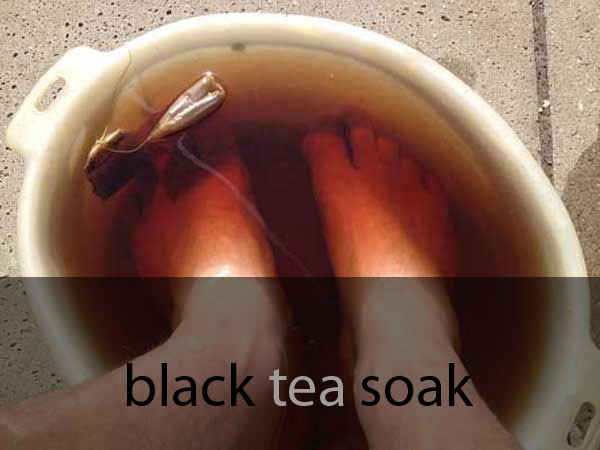Are antiperspirants and other topical cosmetic products containing aluminum (Al) safe to use? Or should you avoid such products as is often led to believe?
These questions have been asked frequently as the deodorant industry has grown to achieve approximately $18 billion in annual revenues and aluminum in deodorants has gotten a bad rep.
Since topical aluminum chloride hexahydrate application to the feet is generally considered a “simple, safe, and inexpensive therapy”, that requires continuous application since “results are often short-lived, and they may be insufficient”, it’s critical to find out if using aluminum in this manner is hazardous to our health.
- Source: AAFP.org. Palmoplantar Hyperhidrosis: A Therapeutic Challenge.
How Antiperspirants/Deodorants Were Conceived
The first deodorant, Mum, appeared in 1888, while the first deodorant and antiperspirant, Everdry, appeared in 1903.
Prior to development of these products, people took care of their sweat and odor issues through careful washing of their affected body-parts and masking odors with perfumes.
Those concerned about sweat piercing their clothing wore items like dress shields or special pads that protected clothing from sweaty armpits.
The initial antiperspirant products were not very well received by society and sales were low. Around 1912, a young woman began marketing an antiperspirant that her father, a surgeon, had developed to keep his hands from sweating while in the operating room.
The active ingredient in this product was Aluminum chloride, and she named it “Odorono” (Odor? Oh No!).
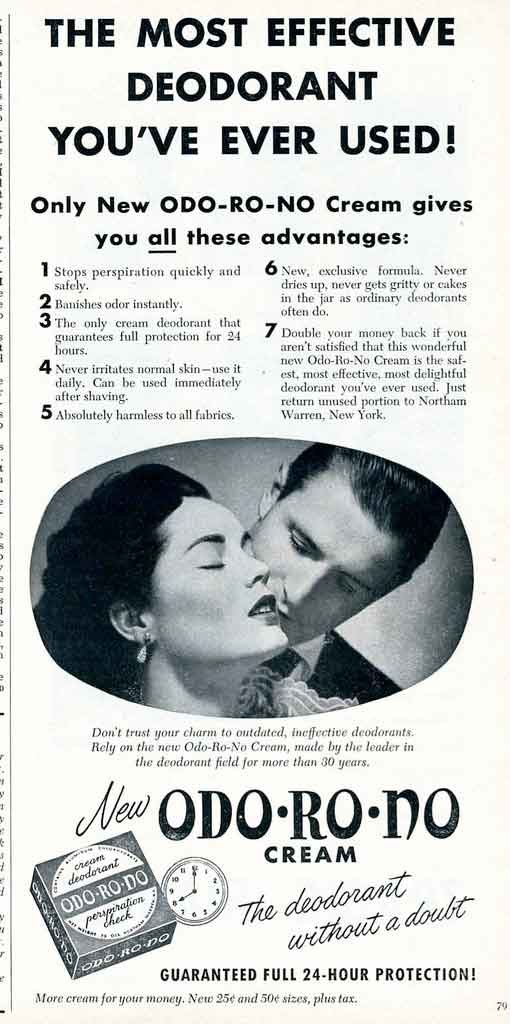 Marketing for Odorono was also initially slow, until the woman joined forces with an advertising professional who decided the key to the product’s success would be to focus on underarm perspiration and body-odor tied to the vanity of women.
Marketing for Odorono was also initially slow, until the woman joined forces with an advertising professional who decided the key to the product’s success would be to focus on underarm perspiration and body-odor tied to the vanity of women.
This marketing strategy worked, vaulting the sales of Odorono to over $1 million by 1927.
The increase in sales of spurred others to develop competing products, and the basis of the current multi-billion dollar industry was formed.
Deodorants and antiperspirants were mostly advertised to women at the beginning of the industry, and it would take another two-decades to get men to believe that they had the same deodorant problem that women had.
It was found that Aluminum chloride (AlCl3) could be harsh to both exposed skin and clothing, so alternate compounds that elicited similar properties were developed, the most common being Aluminum chlorohydrate, which is largely used in modern antiperspirants.
How Aluminum Works in Antiperspirants
The way Al works in antiperspirants is that Al salts in the products (i.e., chlorohydrates, etc.) form insoluble Al hydroxide polymer gel plugs within sweat ducts, temporarily preventing sweat from reaching the surface of the skin (SCCS, 2014, June 18).
By keeping sweating down, the Al salts prevents the ordinarily odorless sweat from being fermented by bacteria that inhabit the surface of the skin. Thus preventing foot odor.
- These bacteria thrive in the warm and moist environments provided by folds of the skin, and the byproducts of their metabolism give rise to what is known as “body-odor”.
How Safe are Toiletry Products Containing Al?
There has been much thought put into whether Aluminum-containing antiperspirants are safe for human use. The concerns have included possible Al toxicity, to Al antiperspirants causing breast cancer, to the products causing renal-failure, to them contributing to the onset of Alzheimer’s disease.
A 1974 study published in Environmental Health Perspectives examined over 800 references on Aluminum since the mid-1950s. This review encompassed the occurrence of Al in soil, air, water, plants, products, and air/water pollution, and examined the biology and toxicology of Al, along with its medical and therapeutic uses.
The study noted that applied to the skin in antiperspirants, Al compounds act as protein precipitants with a low cell-penetration capability. As such, the Al remains bound to proteins in the stratum corneum, and presents no significant pathological changes.
- The study concluded that there is no need for concern by the public or producers of Al or its products concerning hazards to human health derived from well-established and extensively used products.
- It also stated that there have been no reports of either acute or chronic poisoning from the use of Al and its compounds in the processing of foods and beverages (Sorenson, John R. J., Campbell, Irene R., Tepper, Lloyd B., & Lingg, Robert D. 1974, August).
A 2001 study published in the Journal of Food and Chemical Toxicology examined the dermal absorption of Al from antiperspirants.
The study concluded that a small fraction of Al is absorbed through the skin from Al-chlorohydrate products applied to both underarms, compared to the Al typically absorbed by the gut from food over the same time period—saying that antiperspirants do not significantly contribute to the body-burden of Al (Flarend R., Bin T., Elmore D., & Hem S.L., 2001, February).
Aluminium penetration of the skin is very shallow.
This study also concludes that:
“Contact sensitivity to aluminium is very rare. [..] Less common is sensitivity during continuous application of aluminium-containing antiperspirants, topical aluminium application..”
- Aluminium and its compounds occur naturally in bauxite rock and other types os stone and comprise about 8% of the Earth’s surface. Aluminum chloride is derived from aluminum hydroxide. Source: Wikipedia.
Breast cancer
According to the American Cancer Society, an email campaign evolved saying that compounds in antiperspirants were contributing to the incidence of breast cancer in women.
The absorption of these compounds through razor nicks from under-arm shaving was the pathway for this issue.
This organization has declared that there is no clear link between Aluminum-containing antiperspirants and breast cancer, due to the very low absorption of Al into the skin from these products (citing the study referenced in the paragraph above) (American Cancer Society, 2014, October 14).
Alzheimer’s
According to the Alzheimer’s Association, during the 1960s and 1970s a possible link between Al exposure and Alzheimer’s disease was claimed.
The Alzheimer’s Association contends that these links are false and that experts no longer believe that exposure to Al (to include antiperspirants) causes Alzheimer’s disease (Alz.org, 2014).
What Government Sources Say
The U.S. Food and Drug Administration has ruled extensively on Al-antiperspirants. In 2003, the agency concluded that small amounts of Al can be absorbed from the gastrointestinal tract and through the skin.
- However, the accumulation of Al resulting from usual exposures to antiperspirant drug products (application to the underarms once or twice daily) and subsequent absorption is considered minimal (HHS. 78 Fed. Reg. 110, June 9, 2003).
A 2014 study by the European Commission’s Scientific Committee on Consumer Safety (SCCS) examined the safety of AL exposure through food and the use of cosmetic products.
- The study noted that a wide-range of Al compounds are used in a host of different consumer products. Pertaining to antiperspirant products, the SCCS concluded that in the absence of better data to estimate skin penetration of Al, no firm conclusion on internal exposure to Al following use of Al-containing cosmetics can be drawn (SCCS, 2014, June 18).
In Summary
The use of antiperspirants and deodorants got off to a slow-start in the last century, and only took off when slick marketing campaigns appealed to the vanity of people (targeting women first, then also men).
By the first decade of the 21st Century, the industry was a multi-billion dollar per-year seller of products.
There have been multiple efforts to study the effects of Aluminum exposure in various consumer products; including antiperspirant products.
None of these studies, including efforts by government agencies, have conclusively connected exposure to Al from consumer products to cancer, Alzheimer’s disease, or other human malady.
The conclusion was that antiperspirants do not contribute significantly to the overall body-burden of aluminum.
Add that up with another conclusion researchers drew:
“The most effective topical treatment for palmoplantar hyperhidrosis is 20 percent aluminum chloride hexahydrate in absolute anhydrous ethyl alcohol (Drysol)”. Stolman LP. Treatment of hyperhidrosis. Dermatol Clin. 1998; 16:863–9.
And you know what to use when suffering from excessive sweating (of the feet). Here’s more info the best antiperspirants for the feet.
References
- Alz.org. (2014). Alzheimer’s Myths.
- American Cancer Society. (2014, October 14). Antiperspirants and Breast Cancer Risk. Retrieved from
- Antiperspirant Drug Products for Over-the-Counter Human Use-Final Monograph; Food and Drug Administration, HHS. 78 Fed. Reg. 110 (June 9, 2003) (to be codified at 21 C.F.R. pts. 310, 350, & 369).
- Flarend R., Bin T., Elmore D., & Hem S.L. (2001, February). A preliminary study of the dermal absorption of aluminum from antiperspirants using aluminium-26 [Abstract]. Food Chem Toxicol, 39(2), 163-168. DOI:10.1016/S0278-6915(00)00118-6
- SCCS. (2014, June 18). Opinion on the safety of aluminum in cosmetic products. Retrieved from Scientific Committee on Consumer Safety.
- Sorenson, John R. J., Campbell, Irene R., Tepper, Lloyd B., & Lingg, Robert D. 1974, August). Aluminum in the Environment and Human Health. Environ Health Perspect, 8, 3–95.
Image: Nesster Flickr


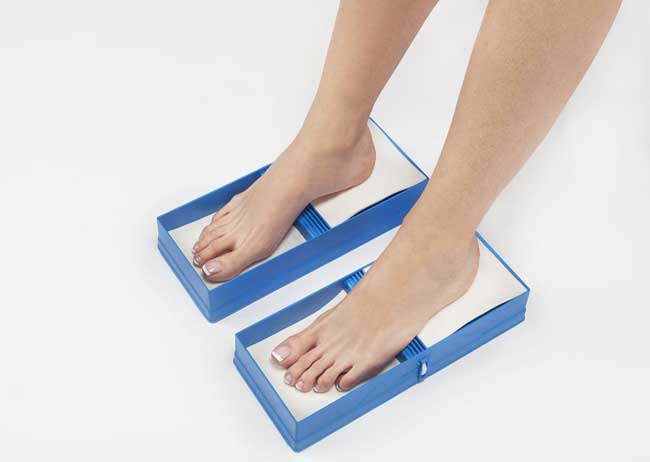
 If you purchase a iontophoresis machine for home use for the sake of convenience and cost reduction you don’t want to have to buy expensive batteries on a regular basis.
If you purchase a iontophoresis machine for home use for the sake of convenience and cost reduction you don’t want to have to buy expensive batteries on a regular basis.